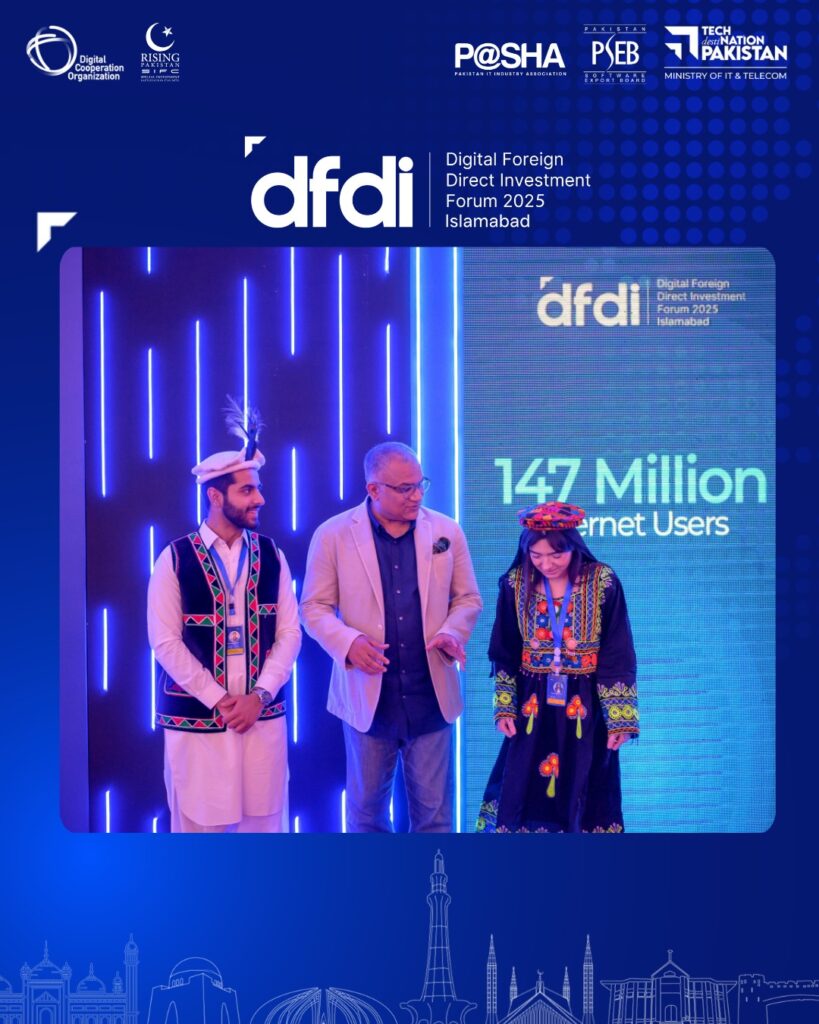Table of Contents
🚀 DFDI-Led Development Projects: Catalyzing Economic Transformation
DFDI-led development projects are driving digital transformation in emerging economies by channeling foreign investment into high-impact sectors like infrastructure, healthcare, education, fintech, and governance. These projects, powered by Digital Foreign Direct Investment (DFDI), represent a shift from traditional brick-and-mortar aid models to smart, tech-enabled, and scalable solutions.
In today’s global economy, digital growth is not a luxury—it’s a necessity. Nations that embrace DFDI-led development projects experience rapid modernization, improved service delivery, increased transparency, and greater inclusion across populations.
🧩 What Are DFDI-Led Development Projects?
DFDI-led development projects are initiatives funded by international investors, corporations, or development agencies focused on leveraging digital technologies to solve key development challenges.
Core Characteristics:
- Funded through foreign digital capital
- Implemented in partnership with local governments and private sectors
- Focused on technology-driven infrastructure or service delivery
- Aligned with Sustainable Development Goals (SDGs)
- Scalable across multiple sectors and regions
These projects accelerate a nation’s path to becoming a competitive, digitally connected, and innovation-led economy.

🧱 Key Areas of DFDI-Led Development Projects
DFDI-led development projects are shaping the future of infrastructure, governance, education, and innovation across emerging economies. These projects are not limited to one domain—they span across multiple sectors, each one strategically chosen to drive digital transformation, economic inclusion, and national progress.
Below are the key areas where DFDI-led development projects are making a profound impact:
🌐 1. Digital Connectivity and Broadband Infrastructure
Connectivity is the lifeline of all digital services. DFDI-led development projects prioritize expanding digital infrastructure such as:
- Fiber-optic broadband networks
- 4G and 5G mobile towers
- Satellite internet for rural and remote regions
- Public Wi-Fi initiatives in schools and marketplaces
By investing in reliable, fast, and inclusive internet access, these projects eliminate the digital divide and open the door to modern services for millions.
🏥 2. eHealth and Digital Healthcare Systems
Health outcomes improve dramatically with the right digital tools. DFDI-led development projects in the healthcare sector focus on:
- Telemedicine platforms for remote consultations
- AI-powered diagnostics and predictive health analytics
- Cloud-based Electronic Health Records (EHRs)
- Digital supply chains for pharmaceuticals
These initiatives reduce the burden on hospitals, lower costs, and improve healthcare access in underserved regions.
🏫 3. Digital Education and Skills Development
Education systems are being reimagined through digital platforms supported by foreign investment. Key areas of DFDI-led impact include:
- E-learning platforms and digital curriculum in public schools
- Online certification and vocational training programs
- Gamified mobile learning apps
- Teacher training on digital pedagogy
These initiatives ensure inclusive, quality education and equip youth with skills for the digital economy.
💳 4. FinTech and Financial Inclusion
DFDI-led development projects help bring financial services to the unbanked and underbanked. This includes:
- Mobile banking platforms and digital wallets
- Blockchain-enabled remittances and microtransactions
- Credit scoring systems for small businesses
- Micro-insurance and mobile savings programs
By enabling access to finance, these projects empower individuals and grow small and medium-sized enterprises (SMEs).
🏛️ 5. E-Governance and Digital Public Services
Digital governance improves transparency and efficiency. DFDI-led development projects in this space offer:
- Online ID systems with biometric verification
- Digital portals for tax, licenses, and public records
- Cloud-based public sector data management
- Real-time citizen feedback and grievance tools
These systems reduce corruption, improve service delivery, and build citizen trust in institutions.
🌿 6. Smart Agriculture and Food Security
In agricultural economies, DFDI-led digital interventions improve productivity and sustainability:
- Precision agriculture with AI and IoT
- Digital marketplaces for small farmers
- Weather and crop advisory apps
- Drones and remote sensing for soil and yield monitoring
These solutions improve food security and ensure farmers earn fair market value.
🚉 7. Smart Cities and Urban Digital Infrastructure
Urban areas benefit from DFDI-led development projects through intelligent infrastructure systems, including:
- Smart traffic and parking management
- IoT-based waste and water monitoring
- Digital surveillance and emergency response systems
- Energy-efficient smart buildings and lighting
These projects make cities safer, cleaner, and more efficient.
🔋 8. Green Energy and Digital Sustainability
Environmental sustainability is central to many DFDI-backed initiatives. Development projects in this area support:
- Solar-powered microgrids and smart meters
- Green data centers and sustainable cloud platforms
- Carbon tracking through blockchain
- Environmental monitoring using drones and AI
These technologies help reduce emissions while expanding access to clean energy.
📊 9. Digital Trade and eCommerce Platforms
Trade becomes more inclusive with digital tools. DFDI-led development projects are building:
- Cross-border eCommerce platforms
- Mobile payment gateways integrated with customs and logistics
- SME training on global e-market access
- Blockchain systems for trade finance and verification
This makes it easier for small businesses to sell products internationally.
🧠 10. Innovation Hubs and Tech Startups
Many DFDI initiatives invest in the future by nurturing innovation ecosystems:
- Startup accelerators and innovation labs
- University-industry research partnerships
- Angel and venture capital funding models
- Legal sandboxes for FinTech, AI, and healthtech
These hubs become magnets for talent, investment, and homegrown tech solutions.ore accountable and citizen-focused.
📈 Economic and Social Benefits of DFDI-Led Development Projects
📊 GDP and Productivity Growth
Technology-driven investments boost output, reduce inefficiencies, and unlock new sectors.
👩💻 Job Creation in the Digital Sector
Projects create jobs in tech support, software development, infrastructure, logistics, and data analysis.
🌍 Inclusive Development
Marginalized groups gain access to services, finance, and education.
♻️ Sustainability and Climate Resilience
Smart agriculture and green energy systems reduce environmental impact.
💡 Innovation Ecosystem
Incubators and research centers emerge, supported by foreign expertise and funding.
🧭 Strategic Steps to Implement DFDI-Led Development Projects
1. 🏛️ Establish a National Digital Investment Framework
Governments must define priority sectors, policies, and regulations for digital investment.
2. 🤝 Build Public-Private Partnerships (PPP)
Collaboration between ministries, tech firms, and development agencies ensures better results.
3. 📑 Create Transparent Legal Guidelines
Ensure investors understand rights, tax structures, data laws, and compliance processes.
4. 🎯 Identify High-Impact Project Areas
Focus on health, education, energy, and infrastructure with measurable outcomes.
5. 🔄 Implement Monitoring and Evaluation Systems
Track KPIs to assess return on investment, social impact, and scalability.
🌐 Real-World Examples of DFDI-Led Development Projects
🇮🇳 India’s Aadhaar and UPI Ecosystem
DFDI helped build a biometric digital ID system and real-time payment network, serving over a billion people.
🇪🇪 Estonia’s E-Residency Program
Attracting global entrepreneurs through digital identity and paperless governance, powered by DFDI partners.
🇷🇼 Kigali Innovation City
A tech-focused economic zone funded by international investors to foster startups and digital research.
🇰🇪 M-Pesa Mobile Banking
Launched with Vodafone’s foreign investment, now a model for global FinTech inclusion.
🔐 Challenges in Deploying DFDI-Led Development Projects
🚧 Infrastructure Gaps
Limited power, poor roads, or network availability may hinder progress.
⚖️ Regulatory Barriers
Outdated or inconsistent digital laws slow down investor interest.
💸 High Capital Requirements
Some projects require large-scale funding, needing multiple investor rounds.
🧠 Talent Shortages
Local lack of digital skills delays project implementation and scaling.
📉 Political or Economic Instability
Unpredictable policies or conflicts may deter long-term investment.
🔮 The Future of DFDI-Led Development Projects
🌱 Green and Sustainable DFDI
Investments in solar, energy-efficient data centers, and smart farming are rising.
🛰️ Satellite-Based Connectivity
Projects leveraging Starlink and OneWeb are bringing rural areas online.
📡 AI, IoT, and Blockchain Integration
New technologies offer breakthroughs in governance, health, and trade.
🌐 Cross-Border Digital Ecosystems
Countries are forming digital corridors and regional investment hubs for shared growth.

❓ Frequently Asked Questions (FAQs)
Q1: What are DFDI-led development projects?
They are development initiatives funded by foreign digital investments to support areas like infrastructure, education, health, and digital finance.
Q2: How do these projects help developing countries?
They modernize public systems, create jobs, improve service delivery, and increase global competitiveness.
Q3: Which sectors benefit the most?
FinTech, e-health, e-education, smart infrastructure, and e-governance see the most transformation.
Q4: How can governments attract DFDI?
By providing clear digital strategies, investor protections, regulatory transparency, and stable political environments.
Q5: Are these projects aligned with the SDGs?
Yes. Most DFDI-led development projects directly support Sustainable Development Goals like quality education, reduced inequalities, and industry innovation.
Follow us on Facebook for Quick Response & Quires – Digital Foreign Direct Investment (DFDI)
